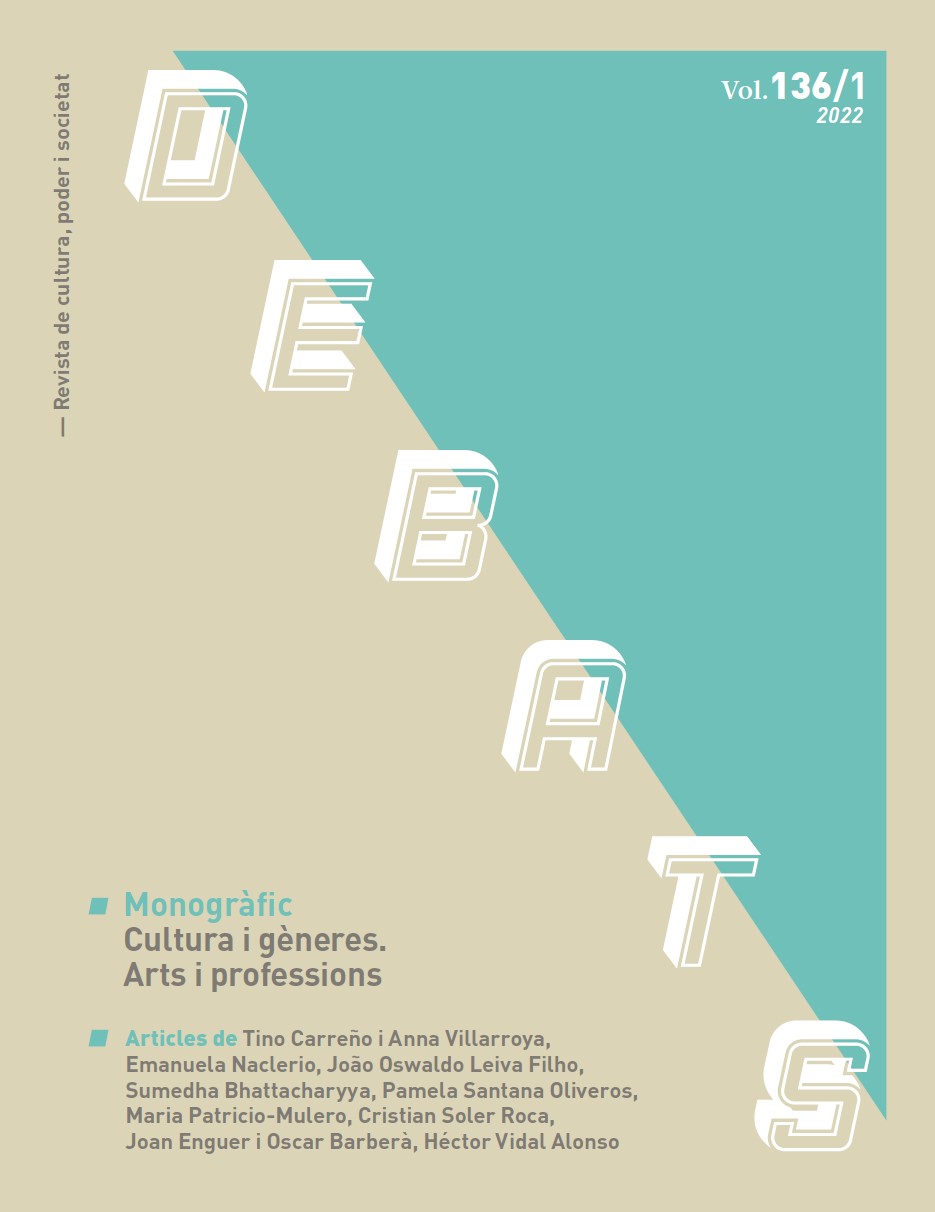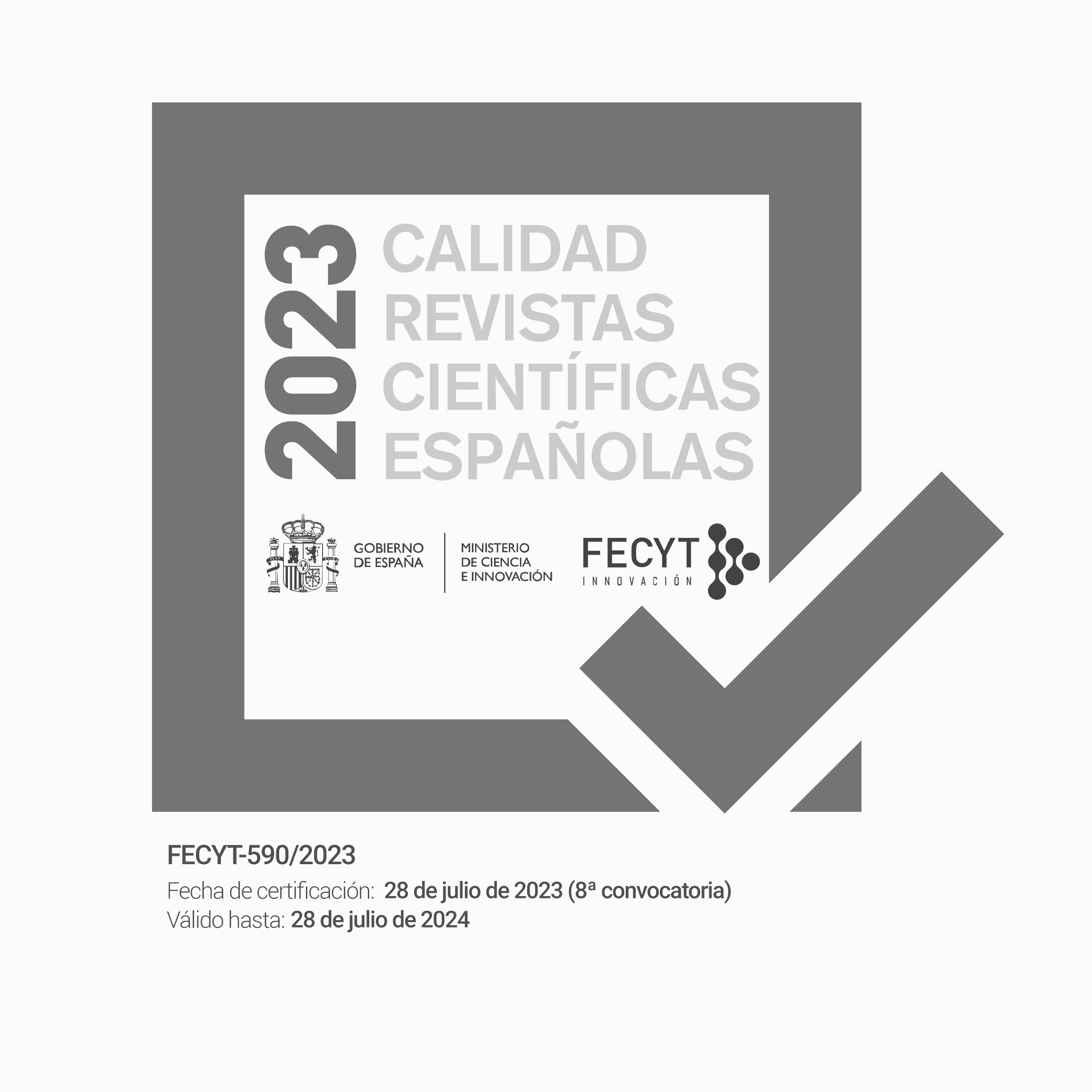The gender paradox: professionalisation of a form of traditional martial arts, Lathi Khela, in the sociocultural context of Bangladesh
DOI:
https://doi.org/10.28939/iam.debats-136-1.4Palabras clave:
Lathi Khela, woman, gender, Bangladesh, continuity, gender capital, prestige, ethnography, autoethnography, pandemic, Martial arts, India, Martial arts dance, dance ethnography, performance, female bodyResumen
In the midst of a COVID-19 pandemic-struck India, this paper was born as an autoethnographic and analytical inquiry; it presents qualitative and multimodal research into a martial arts dance tradition, Lathi Khela, conducted from 2017 to 2018. This practice developed as a martial art, with little or no patronage, during the colonial days of the still undivided Bengal. Indeed, it still lives on as a popular martial arts dance tradition in many districts and rural communities of Bengaluru, Bangladesh. Compared to other districts, the Lathi Khela group from the Narail district has continued this practice through innovative methods. The distinctive character of the district is governed by the multi-generational practitioners of Lathi Khela and their creative choreographies, as well as the knowledge it articulates and embodies. Moreover, in Narail, this previously male-dominated profession has also included women since 2008. The focus of this work was the role of gender in the continuity of the Lathi Khela tradition in this district. This was achieved through five semi-structured, demonstrative interviews intuitively applied in the field. The research also drew on an ongoing conversation on Facebook with Rahat, a veteran Lathi Khela practitioner, who took stock of the current cultural landscape in the context of COVID-19. On the one hand, the women of this district occupy a contested space when representing this male-dominated tradition, and on the other, they physically embody lives within the patrilineal boundaries of kinship and marriage. The performativity of gender is thus directly connected to the symbolic meaning of maan, that is, the prestige attributed to the female body within the sociocultural contexts of the Lathi Khela.
Descargas
Citas
Adhikary S. (2015) The Bratachari Movement and the Invention of a ‘Folk Tradition’, South Asia: Journal of South Asian Studies, 38(4), 656-670, DOI: 10.1080/00856401.2016.1086941
Ahmad, I. (2013). Industrial Relations and Labour Management of Bangladesh. USA & Canada: Trafford Publishing.
Bala S. (2013) The Entangled Vocabulary of Performance University of Amsterdam, Netherlands.Rupkatha Journal on Interdisciplinary Studies in Humanities, 5(2),12-21
Bharucha R.(1989). Notes on Invention of Tradition. Economic and Political Weekly, Vol. 24(33) 1907-1909+1911-1914
Bakka, E., & Karoblis, G. (2010). WRITING "A DANCE": EPISTEMOLOGY FOR DANCE RESEARCH . International Council for Traditional Music.
Bank, W. (2012). http://siteresources.worldbank.org/INTWDR2012/Resources/7778105-1299699968583/7786210-1315936222006/chapter-4.pdf.
Bhattacharyya, S. (2017) [Photograph of: Lathi Khela practitioners from different districts (Manikganj,Kishoreganj,Netrokona group) in rural Bangladesh
Bhattacharyya, S. (2017) [Photograph of: Lathi Khela practitioners from Narail district of Bangladesh
Blanchet T. (1986). Marriage & Divorce in Bengali Muslim Society. unpublished, Dhaka.
Bourdieu, P. (1993). The Field of Cultural Production. Oxford.
Bridges, T. S. (2009). Gender Capital and Male Boldy-Builders. Body & Society SAGE Publications , 15(1), 83–107.
Buckland, T. J. (2001). Dance, Authenticity and Cultural Memory: The Politics of Embodiment. International Council for Traditional Music, 33 , 6-16.
Butler J. (1990). Gender Trouble : Feminism and Subversion of Identity. New York : Routledge
Chandralekha. (1980). Militant Origins of Indian Dance. Social Scientist, Vol. 9,(2/3), 80-85. Retrieved 01 14, 2014
Chowdhury, Najma. (2001). The Politics of Implementing Women’s Rights in Bangladesh, in: Globalisation, Gender and Religion : The Politics of Women’s Rights in Catholic and Muslim Contexts. Palgrave, New York, 203–230.
Giurchescu, A. (1999). Past and Present in Field Research. In T. Buckland, Dance in the Field : Methods and Research in Dance Ethnography . Great Britain: Macmillian Press Ltd.
Kabeer N. The Quest for National Identity: Women, Islam and the State in Bangladesh : Feminist Review ,37, 38-58
Hossain, M. (2015). Women's Participation in Agriculture in Bangladesh 1988-2008: Changes and Determinants. ResearchGate, 1-17.
Huppatz, K. (2012). Gender Capital at Work. New York: Palgrave Macmillian.
Jones, D. E. (2002). Combat, ritual and Performance: Anthropology of the Martial Arts (2 ed.). Westport.
JUPress. (2016, June 20). https://jupress.wordpress.com/2016/06/20/astracharcha-pulin-behari-das-rachanasamgraha/.
Kozinet, R. (2015). Netnography : Redefined.
Kozinets, R. V., Dolbec, P.-Y., & Earley, A. (2013). Netnographic Analysis: Understanding Culture Through Social. In U. Flick, The SAGE Handbook of Qualitative Data Analysis.
Mandakathingal A. (2020) Gender Roles in Martial Art: A Comparative Analysis of Kalaripayattu Practices in India: Women's Studies
Marium, L. (n.d.). RESTRUCTURING TRADITION. SAARC Folklore.
Marium, L. (n.d.). Restructuring Traditions : An Experiment in introduction of Performance Pedagogy and Indigenous Performing Art of Bangladesh. SAARC Folklore, (p. 9).
Marium L.(2021) Empowering communities through culture. (online) https://www.thedailystar.net/opinion/news/empowering-communities-through-culture-2052249. Access on 30th May 2021
Massey, D. B. (1994). Space, place, and gender. Minneapolis: University of Minnesota Press.
Miller, D. L. (2014). Symbolic Capital and Gender: Evidence from two cultural fields. Sage, 1-21.
Munsi, U. S., & Burridge, S. (2011). Imag(in)ing the Nation : Uday Shankar's Kalpana. In Traversing Tradition: Celebrating Dance in India, New Delhi: Routledge, 124-150.
Social Stratification. (2015). Retrieved from banglapedia.com
Turner, B., & Yangwen, Z. (2009). The Body in Asia, Asia Pacific Studies, 1-21
Department of Archaeology Government of the People’s Republic of Bangladesh (2013). National Workshop on Implementation of the UNESCO Convention for the Safeguarding of the Intangible Cultural Heritage in Bangladesh. http://www.culture-developpement.asso.fr/wp-content/uploads/2014/05/Intangible-Cultural-Heritage-EN.pdf
White, S. C. (2010). Domains of contestation: Women's empowerment and Islam in Bangladesh. Women's Studies International Forum, 1-11.
Wikipedia. (n.d.). Retrieved from www.wikipedia.com
Wood, S. (2014). Nations, national identity and Prestige. National Identities, 99-115.
Descargas
Publicado
Cómo citar
Número
Sección
Licencia
Sin perjuicio de lo dispuesto en el artículo 52 de la Ley 22/1987 de 11 de noviembre de Propiedad Intelectual, BOE del 17 de noviembre de 1987, y conforme al mismo, los autores o autoras ceden a título gratuito sus derechos de edición, publicación, distribución y venta sobre el artículo, para que sea publicado en Debats. Revista de cultura, poder y sociedad.
Debats. Revista de cultura, poder y sociedad se publica bajo el sistema de licencias Creative Commons según la modalidad «Reconocimiento - NoComercial (by-nc): Se permite la generación de obras derivadas siempre que no se haga un uso comercial. Tampoco se puede utilizar la obra original con finalidades comerciales».
Así, cuando el autor o autora envía su colaboración, acepta explícitamente esta cesión de derechos de edición y de publicación. Igualmente autoriza a Debats. Revista de cultura, poder y sociedad, la inclusión de su trabajo en un fascículo de la revista para que se pueda distribuir y vender.











